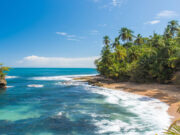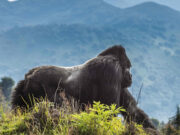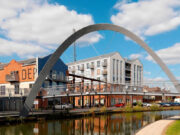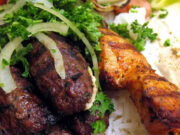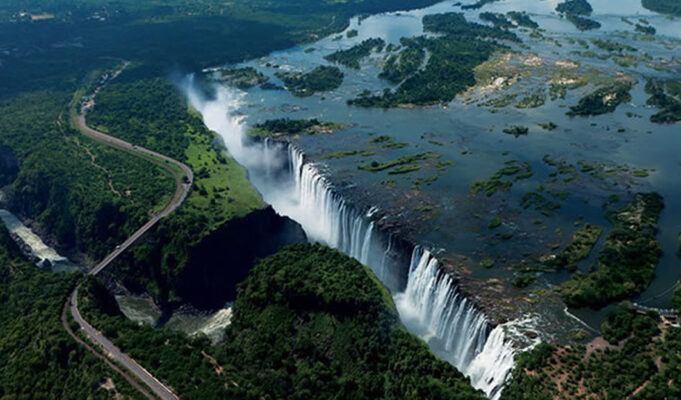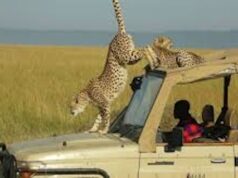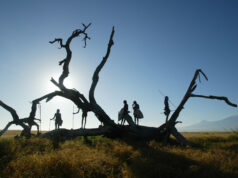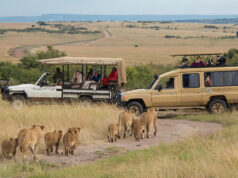Musical, sporting and cultural celebrations will mark Dr. David Livingstone’s bicentenary from March to October in southern Zambia this year. Zimbabwean-born Caroline Hurry returns to the eccentric Eden that so captivated the Scottish explorer.
Dr. David Livingstone’s spectre hovers like the heat in southern Zambia. It permeates his belongings at the Livingstone Museum, where his musings – scrawled in berry juice on the margins of newspaper scraps – testify to lion attacks, malaria-infested swamps, starvation, broken bones, rotten teeth, depression and the dysentery that killed him in 1873. “Knocked up quite,” reads the last entry in his diary.
It saturates the eponymous town – bearing Livingstone’s name long after the turbulent tides of Mugabe’s spittle-flecked, anti-Brit invective sank Rhodesia and Salisbury. Cue ‘Livingstone heart Livingstone’ t-shirts.
“We learnt at school that ‘Munali’ (Dr. Livingstone in the vernacular) was the only white man to fight slavery,” says Bob Mushabati, a curio merchant at the Mukuni craft market, where informal commerce jives to a marimba rhythm coaxed from plank-covered gourds – the lighter the plank, the deeper the sound.
It suffuses the bronze statue of the striding Scotsman, Bible in hand, gaze fixed on the Mosi-oa-Tunya (Smoke That Thunders) – a grandstand spectacle of 500 million cubic metres of water tumbling into the gorge. Double rainbows rising from the mist nurture a lush pocket of forest – ferns, palms, sausage trees and vine-draped ebonies, home to bushbuck, monkeys, butterflies and birds.
So far, so colonial, my dear Stanley, but centuries before Livingstone’s November 1855 arrival at the Falls by dugout canoe – “scenes so lovely must have been gazed upon by angels in their flight,” he wrote – and decades after his demise near Lake Bangweulu, the locals worshipped NyamiNyami, the Zambezi river god with a giant snake body and a fish head.
Markets both sides of the Falls sell ebony and soapstone carvings in homage to the aquatic deity, widely credited with flooding the construction of the Kariba Dam in 1957 and drowning scores of workers, including several Muzungu (foreign) engineers whose bodies failed to wash up.
Tribal elders told a sceptical European search party that NyamiNyami, incensed by the dam construction’s displacement of some 50,000 Batonga people, had sent the floods and kept the bodies. Only the sacrifice of a white calf might persuade him to release them.
With relatives en route to claim the remains of their next of kin, the desperate search team agreed to the ritual slaughter of a white calf, which was cast into the river. By the next morning, the calf had vanished. In its place floated the bodies of the missing engineers. Crocodiles must have devoured the calf but how did the missing Muzungu bodies reappear three days after their initial disappearance? There’s no rational explanation.
ANCESTRAL SPIRITS
NyamiNyami is believed to live at Boiling Pot, a permanent whirlpool formed by the fissure where the current Victoria Falls starts. The million-year-old Falls are a relatively new formation, geologically speaking. Every year, the Mukuni chief sends five warriors down the 110m Batoka Gorge to scoop water from NyamiNyami’s treacherous lair for the ceremonial placation of ancestral spirits.
Visitors can tour Chief Mukuni’s 900 year-old village, home to the Leya (also Tokaleya) people, once frequented by Livingstone, whose heart is buried in a tin box under a tree.
As a devout NyamiNyami-denier, the doctor was never allowed into the chief’s compound but descendants of Susi and Chuma, the faithful companions who wrapped his kneeling corpse in
wild sage and carried it hundreds of kilometres to the coast for shipment to London, still live here.
We explore NyamiNyami’s lair from the air via chartered helicopter, delighting in the Flight of Angels, dipping into Victoria’s misty breath as the mopane-fringed Zambezi carves the landscape into thrilling, three-dimensional focus.
Boiling Pot is also the launch point for white-knuckle river rafting down grade five rapids, followed by a muscle-aching climb up the Batoka Gorge. You can bungee jump off the Victoria Falls Bridge, kayak down Africa’s fourth largest river, or abseil, Indiana-Jones-like, over the gorge.
Too much? Restore your spirits in one of four stilted villas flanked by the glossy Zambezi and riverine forest on Royal Chundu’s private island of Katombora. Folding glass doors connect cool, spacious interiors with the wild outdoors as grunting hippo provide wraparound sound. A kingfisher on a low branch swoops for a small silver fish. Monkeys chatter as the night fills with stars. This is Africa on a gilded platter.
A TASTE OF RURAL LIFE
From the Royal Chundu Zambezi River Lodge, my husband and I take a mokoro (a dugout canoe) 1.5 km down river the next morning to visit Edith Mushewa, chief of the Mushekwa Village. A mother to many orphans – Aids continues to decimate the adult population in the region – Queen Edith keeps the village going. She shows us her peanut plantation and how crushed bitter berries mixed with water produce an eco-friendly soap.
To visit any local village is to taste rural life; crushing mealies, drawing water, smearing cow dung or harvesting thatching grass. Tenacity springs like fresh flowers in old tins from limited parameters. Goats scratch rumps on tree stumps; laundry dances from makeshift lines. Here, a boy carves curios; there, a woman ties sticks into bundles.
Most visitors to Victoria Falls choose Zambia rather than Zimbabwe as their base but the scheduled arrival of the United Nations World Tourism Organisation to the region this year is expected to boost Mugabeland’s tourism figures, despite the refusal by Zimbabwean bankers to finance a required cash injection of US$100 million to bring facilities up to par.
Victoria Falls in Zimbabwe feels like a frontier outpost with textiles, crafts, sculptures and ceremonial masks aimed at the well-heeled tourist. Clocking us as newcomers, curio sellers cluster round. “You like this hippo, Madam? For you, just $10. Please, Sir? I’m hungry. I haven’t eaten all day.”
Goods may be bartered for clothing, fresh batteries, or even shoes, but with more artifacts than buyers, prices got even lower as we made our way down the main drag and hailed a taxi with a cracked windscreen, torn seat covers and back windows stuck at half-mast. The ‘Trust God’ sticker dominating the dashboard was a handy aide-memoire as the rattletrap spluttered towards Elephant Camp where hand-reared orphaned pachyderms made for more elegant transport.
Scaling wooden stairs and climbing on to Tusker’s back from a platform, we ambled into the bush as impala, kudu and waterbuck eyed us from a distance and eagles rode the thermals overhead.
The elephant’s silent gait held a seductive rhythm even as he uprooted every tree in his path. Back in Zambia, a potent cocktail of vermilion sunset, dry white wine and a chugging riverboat made for a tipsy cinematic evening on the Upper Zambezi, where pods of hippo blew bubbles and crocs displayed fearsome gnashers from sandy banks.
That night, NyamiNyami slithered into my dreams and when we awoke for an early walk around Katombora Island, the name of our guide who showed us fresh hippo tracks and knob thorn acacias, turned out to be… Nyami.
A wink from the fishy snake spirit? I like to think so.
WAY TO GO
Royal Chundu Zambezi River Lodge
Tel. +27 (0) 13 751 1038/www.royalchundu.com
While Livingstone suffered unspeakable hardships, visitors today can enjoy their own adventures gift-wrapped in luxury at the Royal Chundu Zambezi River Lodge.
An international festival of arts, culture and sporting events…
from March to November 2013 will commemorate Livingstone’s bicentenary. It will include cultural and medical exchanges between schools, libraries and hospitals in Livingstone, Scotland and Livingstone, Zambia. The celebrations will mark David Livingstone’s commitment to medicine and education and his campaigning for the eradication of slavery, still an active cause 200 years later. For information, see www.livingstone2013.com.
Both Zambia & Zimbabwe offer a similar range of activities…
• Whitewater rafting through Batoka Gorge
• Canoeing or kayaking on the upper Zambezi
• Horseback trails in the Mosi-o-Tunya National Park
• River boarding on the Zambezi rapids
• Bungee jumping from the 111m-high Victoria Falls Bridge
• Abseiling off the gorge
Game safaris
Tel. +260 213 323 095/www.uaczam.com
• Drive or walk through the Mosi-o-Tunya National Park
• Microlighting or helicopter flights over the Falls
• We used United Air chartered helicopter flights
Sunset cruises
Enjoy a sundowner as you navigate the Zambezi River.
Elephant back safaris
The WildHorizons Trust manages a herd of orphaned elephants in Zimbabwe at Elephant Camp, www.victoriafalls.net. The Zambian elephant-back safari trails begin at Thorntree Lodge in the Mosi-o-Tunya National Park. For details, as well as information on guided rhino walks to see Zambia’s carefully guarded last eight white rhinos, visit www.zambiatourism.com



